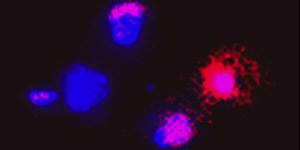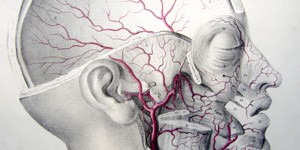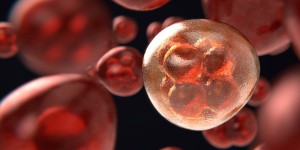By Manuel Guzmán

Manuel Guzmán is Professor of Biochemistry and Molecular Biology at Complutense University of Madrid, member of the Spanish Royal Academy of Pharmacy, and member of the Board of Directors of the International Association for Cannabinoid Medicines. His research focuses on the study of the mechanism of action and therapeutic properties of cannabinoids, especially in the nervous system. This work has given rise to more than one hundred publications in specialized international journals, as well as to several international patents on the possible therapeutic applications of cannabinoids as anticancer and neuroprotective drugs. He routinely collaborates with scientific reviewing and funding agencies.
Huntington's disease (HD) is a devastating neurodegenerative disease that begins with choreic movements and goes on to include serious motor, behavioural and cognitive alterations (Walker, 2007).
There is currently no known cure for HD. It leads to the death of the patient between 10 and 20 years from the onset of the symptoms. The disease has an approximate prevalence of 1 case per 10,000 and is caused primarily by the degeneration of a specific population of neurons, called "medium spiny neurons" (MSNs). These cells make up practically all (~95%) of the neurons in an area of the brain known as the "dorsal striatum" (or, more strictly, in humans the "caudate/putamen"), which monitors important neurobiological processes such as motor activity, cognitive functions and emotional control.
From a molecular point of view, it has been known for some time that HD results from the mutation of a single gene, which codes the protein known as "huntingtin" (The Huntington's Disease Collaborative Research Group, 1993). However, the precise mechanisms by which the mutated huntingtin causes progressive degeneration of MSNs are extraordinarily complex and only partially known (Ross et al., 2014).
Cannabinoids and HD: preclinical data
The cannabinoid receptor CB1 (CB1R), the main molecular target of endocannabinoids and THC, is expressed in very high quantities in MSNs, which, as mentioned are the cells that primarily degenerate in HD. The receptor is also present in the terminals of "corticostriatal neurons", which, as their name suggests, project from the cortex to the striatum and are responsible for fine controlling the activity of the MSNs (Fernández-Ruiz et al., 2011; Castillo et al., 2012). CB1R levels drop early and notably in MSNs in patients (e.g. Richfield y Herkenham, 1994; Glass et al., 2000; Allen et al., 2009) and animal models (e.g., Denovan-Wright y Robertson, 2000; McCaw et al., 2004; Casteels et al., 2011) of HD.
In contrast, CB1R expression is not affected in corticostriatal projections during HD (Chiodi et al., 2012; Chiarlone et al., 2014). The expression of other elements of the endocannabinoid system also changes during the development of HD (Fernández-Ruiz et al., 2011; Laprairie et al., 2015). Levels of the cannabinoid receiver CB2 (Palazuelos et al., 2009; Sagredo et al., 2009) and the FAAH enzyme (fatty acid amide hydrolase, the principal enzyme degrading anandamide; Blázquez et al., 2011) increase in the striatum of patients and animal models of HD, whereas levels of anandamide and other endocannabinoids are reduced (Bisogno et al., 2008).
Studies carried out by two independent laboratories have shown that genetic inactivation of CB1R aggravates HD in mouse models of the disease (Blázquez et al., 2011; Mievis et al., 2011). Analogously, administration of THC (2 mg/kg/day; Blázquez et al., 2011) or the synthetic cannabinoid WIN-55.212-2 (0.3 mg/kg/day; Pietropaolo et al., 2015) in mice models of HD delays the onset and attenuates the pathology and motor symptoms of the disease. Nonetheless, an additional study found no beneficial effects of THC (albeit at a very high dose, 10 mg/kg/day), the synthetic cannabinoid HU-210 (0.01 mg/kg/day) or the inhibitor of FAAH URB597 (0.3 mg/kg/day) in a mouse model of HD (Dowie et al., 2010).
For many years it was hypothesized that an early and accentuated drop in the expression of CB1R in MSNs might play a pathogenic role in HD (Maccarrone et al., 2007; Fernández-Ruiz et al., 2011). However, selective genetic inactivation (Chiarlone et al., 2014) or selective genetic overexpression (Naydenov et al., 2014; Blázquez et al., 2015) of CB1R in the MSNs of mouse models of HD does not affect the motor impairments suffered by these animals. On the contrary, selective genetic inactivation of CB1R in their corticostriatal projections markedly worsens their motor behaviour (Chiarlone et al., 2014). From a biomedical perspective, therefore, it is very likely that the therapeutic target of the neuroprotective effects of cannabinoids in animal models of HD is the CB1R population located in the corticostriatal neurons and not that located in the MSNs.
Cannabinoids and HD: clinical data
Several clinical trials have been conducted to date with cannabinoids in HD. A first 6-week double-blind, crossover, placebo-controlled trial on 15 HD patients who were administered 10 mg/kg/day of CBD orally showed that this cannabinoid was safe but did not affect the severity of the chorea and other symptoms of the disease (Consroe et al., 1991).
Two additional uncontrolled single-patient studies using the synthetic cannabinoid Nabilone gave contradictory data on HD-associated chorea: one of the patients worsened (with 1.5 mg of Nabilone per day; Muller-Vahl et al., 1999), whereas the other improved (with 1 mg of Nabilone twice a day; Curtis y Rickards, 2006). Subsequently a double-blind, crossover, placebo-controlled trial was conducted in which Nabilone (1-2 mg per day) was administered to 37 HD patients during two 5-week periods, separated by a 5-week washout period (Curtis et al., 2009). The Nabilone was safe and well tolerated, but its effects were practically identical to those of the placebo in the different motor, cognitive, behavioural and neuropsychiatric scales analysed.
Finally, a double-blind, crossover, placebo-controlled trial was performed in which Sativex was administered (approximate average dose: 20 mg of THC and 20 mg of CBD per day) to 24 HD patients for two 12-week treatment periods, separated by a 4-week washout period (Lopez-Sendon Moreno et al., 2016). The Sativex was safe and well tolerated, but no significant effects were observed either in the motor, cognitive, behavioural and functional parameters or in the biomarkers assessed.
Conclusions
Numerous preclinical studies have demonstrated the neuroprotective power of cannabinoids in different animal models of neurodegeneration. This has raised hopes on possible clinical utility, especially in very serious diseases such as HD, for which no effective treatment is known.
However despite being globally safe and well tolerated, cannabinoids have not as yet shown any neuroprotective activity in humans. This discrepancy between the basic and clinical research may be due to factors such as the substantial biological differences between the animal models and human pathology or to inadequate design of the clinical trials, which have to date been geared towards assessing safety more than effectiveness. It therefore seems logical to suggest that future clinical trials should be conducted in earlier stages of HD with longer periods of treatment with cannabinoids. It might also be useful to know the pattern of cannabis use by HD patients and to have some biomarkers related to CB1R activity during the development of HD.
In all, the safety and tolerability shown thus far by different cannabinoids in clinical trials on HD should encourage more exhaustive future trials to assess whether these compounds might be used as therapeutic agents for treating this highly aggressive disease.
Bibliography
Allen KL et al. (2009) Cannabinoid (CB1), GABAA and GABAB receptor subunit changes in the globus pallidus in Huntington's disease. J Chem Neuroanat 37:266-281.
Bisogno T et al. (2008) Symptom-related changes of endocannabinoid and palmitoylethanolamide levels in brain areas of R6/2 mice, a transgenic model of Huntington's disease. Neurochem Int 52:307-313.
Blázquez C et al. (2015) The CB1 cannabinoid receptor signals striatal neuroprotection via a PI3K/Akt/mTORC1/BDNF pathway. Cell Death Differ 22:1618-1629.
Blázquez C et al. (2011) Loss of striatal type 1 cannabinoid receptors is a key pathogenic factor in Huntington's disease. Brain 134:119-136.
Casteels C et al. (2011) Metabolic and type 1 cannabinoid receptor imaging of a transgenic rat model in the early phase of Huntington disease. Exp Neurol 229:440-449.
Castillo PE et al. (2012) Endocannabinoid signaling and synaptic function. Neuron 76:70-81.
Consroe P et al. (1991) Controlled clinical trial of cannabidiol in Huntington's disease. Pharmacol Biochem Behav 40:701-708.
Curtis A & Rickards H (2006) Nabilone could treat chorea and irritability in Huntington's disease. J Neuropsychiatry Clin Neurosci 18:553-554.
Curtis A et al. (2009) A pilot study using nabilone for symptomatic treatment in Huntington's disease. Mov Disord 24:2254-2259.
Chiarlone A et al. (2014) A restricted population of CB1 cannabinoid receptors with neuroprotective activity. Proc Natl Acad Sci USA 111:8257-8262.
Chiodi V et al. (2012) Unbalance of CB1 receptors expressed in GABAergic and glutamatergic neurons in a transgenic mouse model of Huntington's disease. Neurobiol Dis 45:983-991.
Denovan-Wright EM & Robertson HA (2000) Cannabinoid receptor messenger RNA levels decrease in a subset of neurons of the lateral striatum, cortex and hippocampus of transgenic Huntington's disease mice. Neuroscience 98:705-713.
Dowie MJ et al. (2010) Behavioural and molecular consequences of chronic cannabinoid treatment in Huntington's disease transgenic mice. Neuroscience 170:324-336.
Fernández-Ruiz J et al. (2011) Prospects for cannabinoid therapies in basal ganglia disorders. Br J Pharmacol 163:1365-1378.
Glass M et al. (2000) The pattern of neurodegeneration in Huntington's disease: a comparative study of cannabinoid, dopamine, adenosine and GABAA receptor alterations in the human basal ganglia in Huntington's disease. Neuroscience 97:505-519.
Laprairie RB et al. (2015) Components of the endocannabinoid and dopamine systems are dysregulated in Huntington's disease: analysis of publicly available microarray datasets. Pharmacol Res Perspect 3:e00104.
López-Sendón Moreno JL et al. (2016) A double-blind, randomized, cross-over, placebo-controlled, pilot trial with Sativex in Huntington's disease. J Neurol 263:1390-1400.
Maccarrone M et al. (2007) The endocannabinoid pathway in Huntington's disease: A comparison with other neurodegenerative diseases. Prog Neurobiol 81:349-379.
McCaw EA et al. (2004) Structure, expression and regulation of the cannabinoid receptor gene (CB1) in Huntington's disease transgenic mice. Eur J Biochem 271:4909-4920.
Mievis S et al. (2011) Worsening of Huntington disease phenotype in CB1 receptor knockout mice. Neurobiol Dis 42:524-529.
Muller-Vahl KR et al. (1999) Nabilone increases choreatic movements in Huntington's disease. Mov Disord 14:1038-1040.
Naydenov AV et al. (2014) Genetic rescue of CB1 receptors on medium spiny neurons prevents loss of excitatory striatal synapses but not motor impairment in EH mice. Neurobiol Dis 71C:140-150.
Palazuelos J et al. (2009) Microglial CB2 cannabinoid receptors are neuroprotective in Huntington's disease excitotoxicity. Brain 132:3152-3164.
Pietropaolo S et al. (2015) Chronic cannabinoid receptor stimulation selectively prevents motor impairments in a mouse model of Huntington's disease. Neuropharmacology 89:368-374.
Richfield EK & Herkenham M (1994) Selective vulnerability in Huntington's disease: preferential loss of cannabinoid receptors in lateral globus pallidus. Ann Neurol 36:577-584.
Ross CA et al. (2014) Huntington disease: natural history, biomarkers and prospects for therapeutics. Nat Rev Neurol 10:204-216.
Sagredo O et al. (2009) Cannabinoid CB2 receptor agonists protect the striatum against malonate toxicity: relevance for Huntington's disease. Glia 57:1154-1167.
The Huntington's Disease Collaborative Research Group (1993) A novel gene containing a trinucleotide repeat that is expanded and unstable on Huntington's disease chromosomes. Cell 72:971-983.
Walker FO (2007) Huntington's disease. Lancet 369:218-228.


